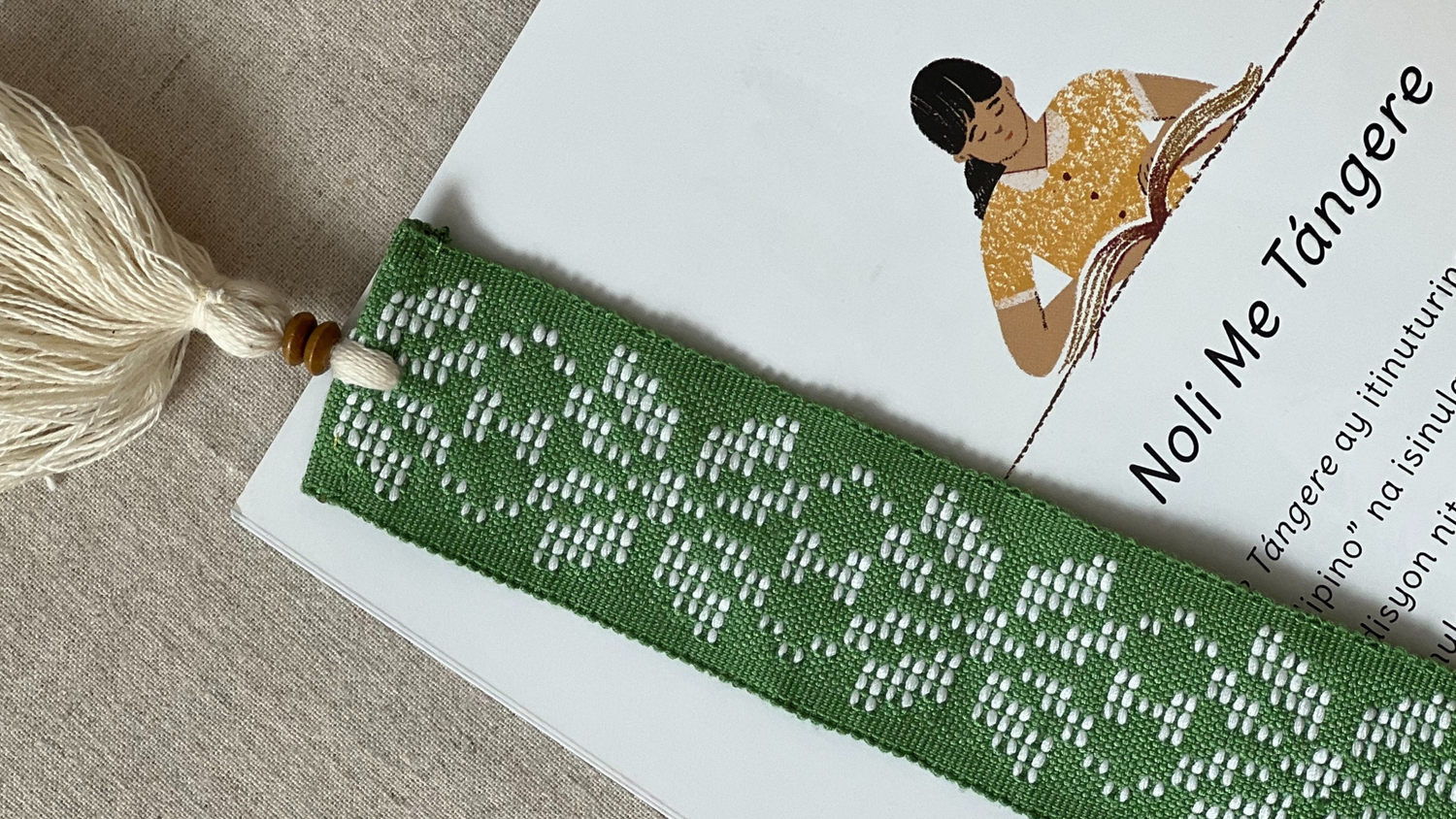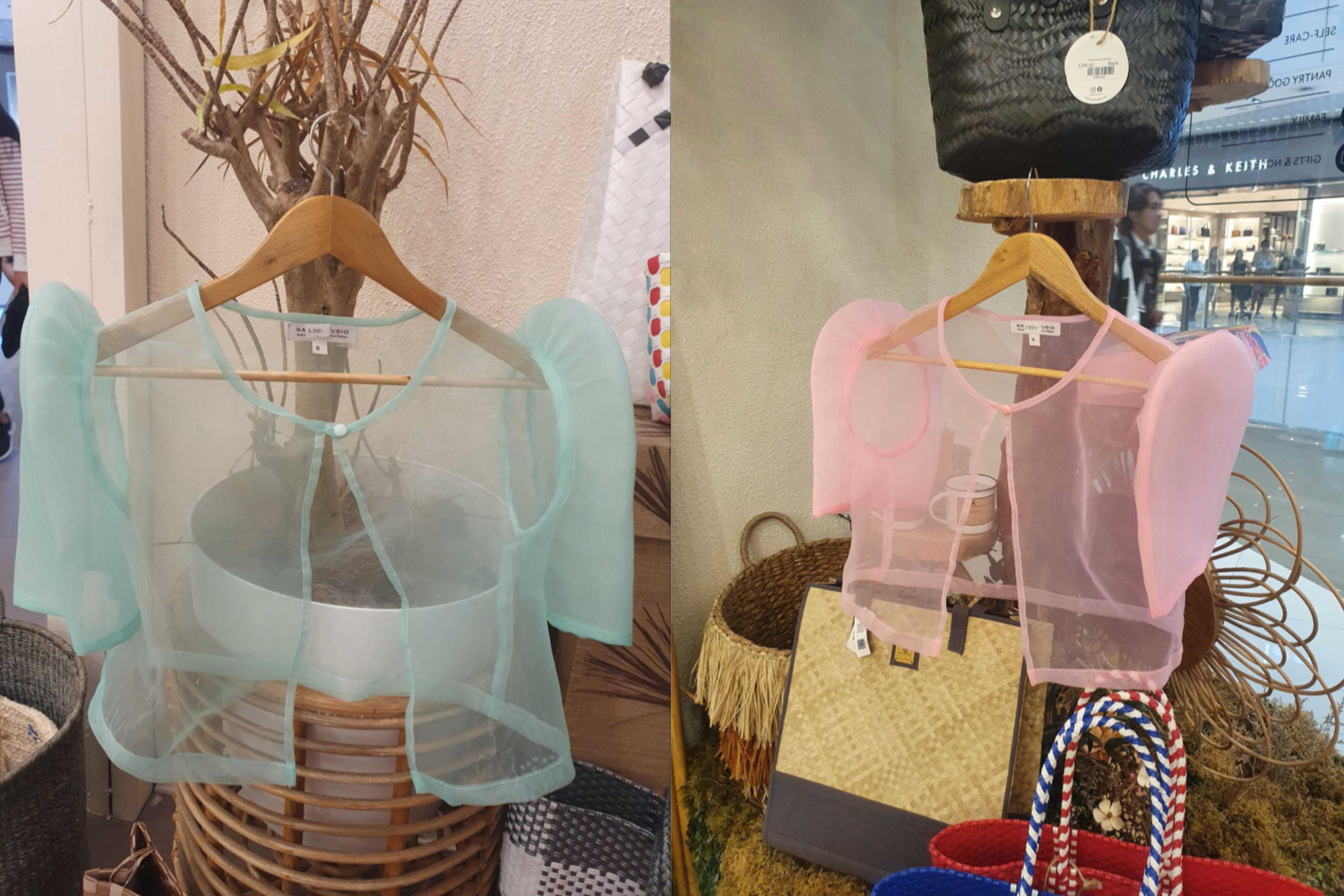By Chesca Santiago
For centuries, the Ifugao have been casting wonders into the world through their hands. From the grand to the minute, the sacred to the secular, we have witnessed these majesties in various typologies: the historical eminence of the rice terraces, the venerated charm of the lingling-o, and—perhaps in their most elaborate expression yet—the fineness of the Ifugao weave.
For such intricacy to unfold, several steps are necessary before cotton emerges into the intricate Ifugao textile that generations have come to know. With weaving assigned as a task belonging to the feminine domain, women must fluff, spin, skein, dye, wind, loom, and warp before threads are finally woven into precious Ifugao cloth.

Ifugao women wearing skirt made from Ifugao textile. Image Credit: David Stanley
https://www.flickr.com/photos/79721788@N00/40878921493
While this tedious process merits a look in its entirety, of particular interest are the dyeing and weaving steps—for it is in these procedures that the community forges the utmost solidarity with the cosmos. In dyeing, nature bestows its bounty through the raw materials used to stain the yarn. In weaving, thread is made to realize patterns that often tell of gods and sacred beings.
Color as harmony with nature
As such, Ifugao textile symbols come in dozens of morphologies, such as the tiniktiku (lightning bolt) representing messenger deities, tinaggu (human) depicting ancestors, and the hinappiyo (shield) symbolizing protector deities. Whatever pattern emerges from the weaver’s masterful imagination, the textile is always woven in distinct reds, blacks, whites, yellows, blues, and greens reaped from the riches of their forests and fields.

Reds, blacks, and whites figure most prominently in Ifugao textile.
Cotton, the raw material for the threads of Ifugao textile, is naturally white. Yet before white threads are rendered ready for winding, the cotton threads are bathed in rice milk for more resistance.
Meanwhile, blue dye and red dye are produced by boiling the yarn with indigo plant leaves and with small splinters of the stem of a bungbung tree, respectively. For vibrant yellows, kogon, turmeric, or a mixture of pounded kulalo plant tubers and lime may be used while greens are produced from mayana leaves.

Yarn is boiled with indigo plant leaves to produce blue dye.
https://commons.wikimedia.org/w/index.php?curid=36649951
Black dye, however, demands extra time and caution. After boiling with the leaves and twigs of a blublu tree, the yarn undergoes the additional step of mud dyeing. Here, mud obtained from the rice terraces is used as a natural mordant, sealing the dye in place as it simultaneously darkens the thread to the weaver’s desired intensity.
A single bundle of yarn necessitates a laborious process of gathering, tying, and boiling to be dyed. In consequence, the recent decades have seen the Ifugao favoring pre-colored yarn from commercial suppliers. But whichever dyeing process has been used, the majesty of an Ifugao textile will never be lost—precisely because it is crafted only with ardent expertise.
The ikat technique
Among different dyeing methods, the Ifugao are known best for their mastery of the resist-dyeing technique called ikat. Here, portions of the outstretched yarn are tied with a water-resistant material to resist the dye. Patterns are revealed by the alternating colored and uncolored sections of yarn.

As dye bleeds into the threads, ikat weaves are known for the slightly blurry patterns they produce.
Although emblematic of the Ifugao, ikat is practiced by other communities in Southeast Asia and the Philippines as well, including the T’boli of South Cotabato and the B’laan of Southern Mindanao. The technique can come in several types: warp ikat when only the vertical yarn is dyed, weft ikat for horizontal yarn, and double ikat when both warp and weft threads are dyed. For all three techniques, immense precision and dexterity are required of the weaver.
Four weaving methods of the Ifugao
The lengthy dyeing process only serves to herald the equally laborious task of finally weaving the threads together. Using the ablan (backstrap loom), the Ifugao employ four weaving techniques to actualize their designs.

The ablan (backstrap loom) used by the Ifugao for weaving. Image property of Museo Kordilyera. https://museokordilyera.upb.edu.ph/museum-collections/ablan/
The simplest of the four is kinulhudan, a technique used in making plain stripes. With this method, patterns emerge by carefully arranging and weaving together threads of different colors. The ikat technique, meanwhile, is known locally to the Ifugao as binobodan.
Nilihha or pinilli operates similarly to kinulhudan with its use of pre-colored threads. However, more complex maneuvers with the ablan are needed as it weaves designs more intricate than plain stripes. Finally, balud involves the crisscrossing of weft (horizaontal) threads inserted to warp (vertical) threads to actualize patterns.

The Ifugao cloth serves multiple functions for the community. Image Credit: Ranieljosecastaneda
https://openverse.org/image/7595fb82-a39c-4eb3-8357-ed819105134c?q=ifugao%20cloth
Textile as testament
After the painstaking process of crafting a single Ifugao weave, the textile is used for a variety of purposes both sacred and mundane. From skirts, gee strings, belts, upper working garments, bags, to funerary blankets, the Ifugao cloth cuts holistically across daily life.
But far from serving merely a practical function, the entire weaving process renders Ifugao textile an articulation of the community’s values—a testament to their patience and solidarity with the forests, fields, and the cosmos.





